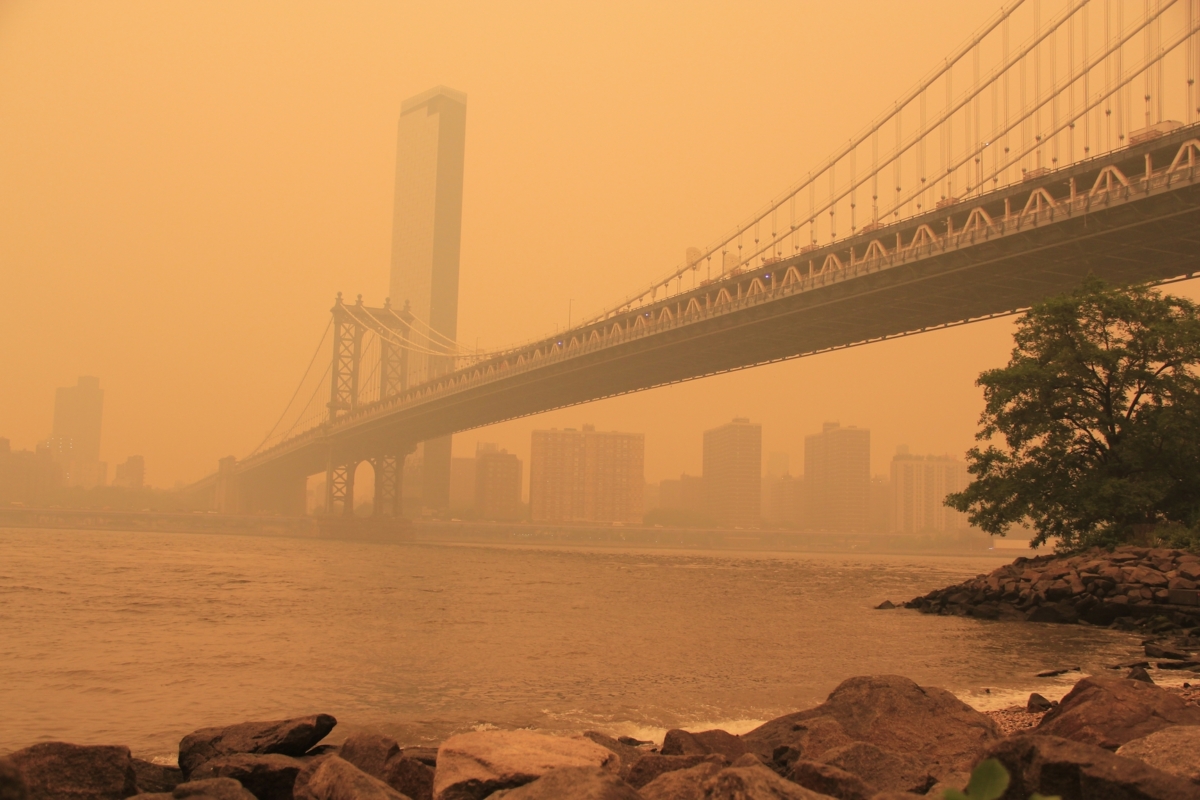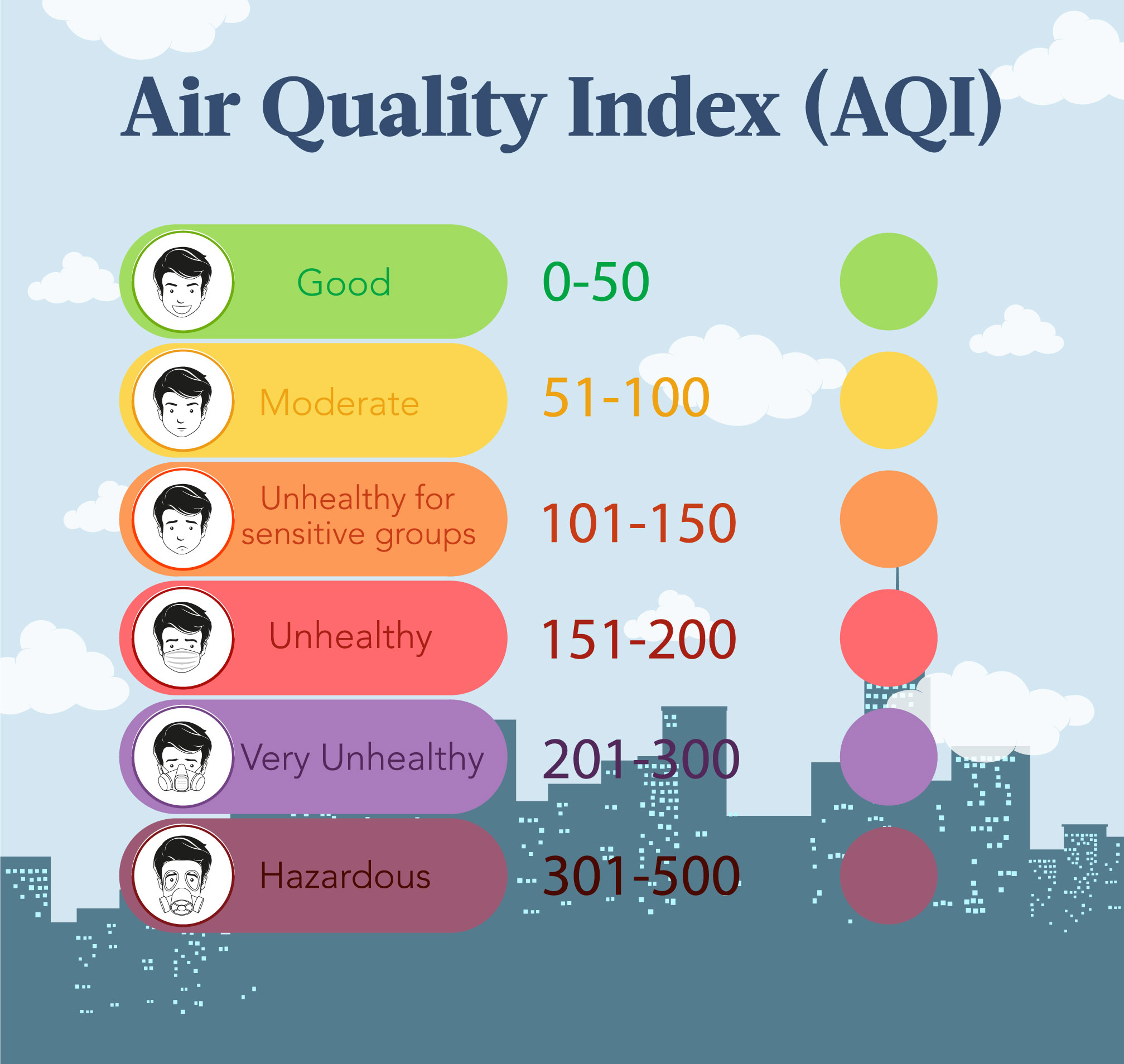


With wildfires raging out of control across Canada, experts warn the United States may be facing a summer of intense heat and hazardous smoke. But just how dangerous is this smoke to our health, and when should we be masking up outdoors?
“If you are healthy, you’re usually not at major risk from short-term exposure to smoke,” said Dr. Thomas Kilkenny, a pulmonary and critical care specialist at New York’s Northwell Staten Island University Hospital. “Still, it’s wise to avoid breathing smoke when possible.”
Staying aware of air quality alerts and taking proper precautions is key, Dr. Kilkenny added.
When there’s wildfire smoke reported for your area, it’s important to monitor the U.S. Air Quality Index (AQI), Dr. Kilkenny said.
“This is a measurement of the amount of particulate matter (PM) in the air that is of the dangerous type, noted as PM 2.5 and PM 10,” he added. “These values both relate to the size of the particles in the air.”
In addition to the fine particulate matter with a diameter of 2.5 or 10 micrometers, AQI quantifies the levels of ozone, nitrogen dioxide, sulfur dioxide, and carbon monoxide.
The AQI typically ranges from zero to 500, with lower values indicating better air quality and higher values indicating worse air quality. The AQI is color-coded and categorized into different levels, each corresponding to a different level of health concern.
Wildfire smoke poses health hazards like lung damage, but some people face much bigger risks of severe health problems.
The AQI is a scale, ranging from “good” to “hazardous.” When the AQI is elevated, wearing specific types of masks called respirators can be helpful.
The appropriate mask is determined by particle size, with small particles (PM 2.5) easily passing through protections like scarves, bandanas, or even surgical masks and dust masks found at large hardware stores, according to Dr. Kilkenny. “These masks would offer little help,” he added.
However, respirators are designed to block even the smallest particulates, including PM 2.5. Some of these respirators are known as NIOSH N95 and P100 types in the United States, the KN95 in China, and FFP2/FFP3 in the European Union. N95 masks are readily available in stores or online in the United States without a prescription.
Using a mask with lower efficiency than an N95 will not effectively prevent dangerous smoke particles from reaching your lungs, Dr. Kilkenny said.
The decision to wear a mask depends on a person’s susceptibility. “If the person has chronic lung issues, they should start wearing the mask when the AQI is elevated into the orange range, which is noted as being ‘unhealthy for certain groups,’” Dr. Kilkenny said. When the AQI is elevated beyond that, “even healthy individuals should consider wearing a device.”
People should use their common sense, Dr. Kilkenny added. If it looks smoky outside or the AQI is elevated, “it’s probably not a good time to go outside and go for a run,” and children should avoid playing outdoors as well.
On days when wildfire pollution is high, the best approach may be to stay inside with all windows and doors closed, while running your air conditioner on recycle mode to reduce the amount of particulate matter entering the home.
“Once the AQI begins to lower again into the safe zone, it would then be OK to remove the respirator while outside and begin to return to your usual habits,” Dr. Kilkenny said.
As bad as the Canadian wildfires have been so far, the odds are that the smoke will likely continue, or even worsen, in the near future. Even one major forest fire can prove daunting to control, and Canada isn’t trying to put out just one fire. Firefighters from around the world are gathering in our northern neighbor to help fight what has become Canada’s worst wildfire season on record.
Data from the Canadian Interagency Forest Fire Centre (CIFFC) show the country is nearly covered in blazes, and Canadian government officials anticipate heightened wildfire risks to continue.
As we approach the dog days of summer, there is a high possibility of many more air-quality alert days due to the ongoing wildfires, along with hot and dry conditions that could exacerbate the impact of wind-driven wildfire smoke.
You can visit https://fire.airnow.gov/ to access an interactive fire and smoke map of North America and stay updated on changing air quality across the continent as the northern wildfires continue to burn.
What topics would you like to read about? Please let us know at health@epochtimes.nyc

